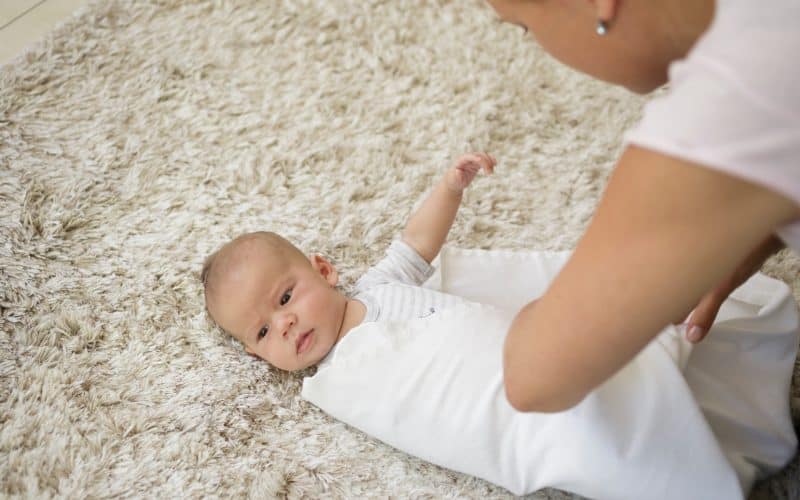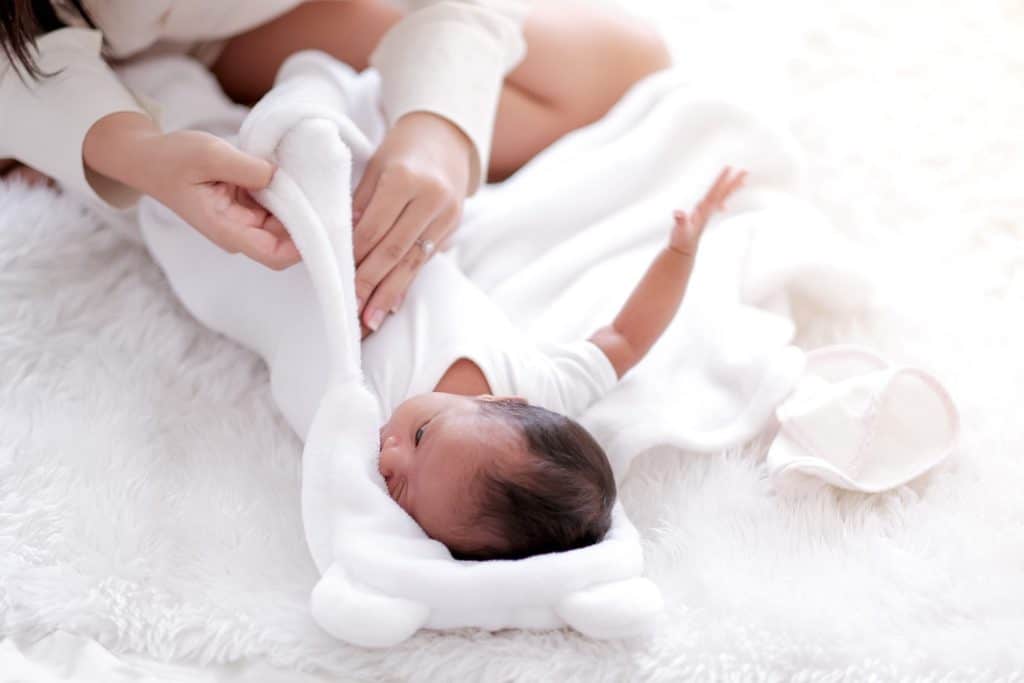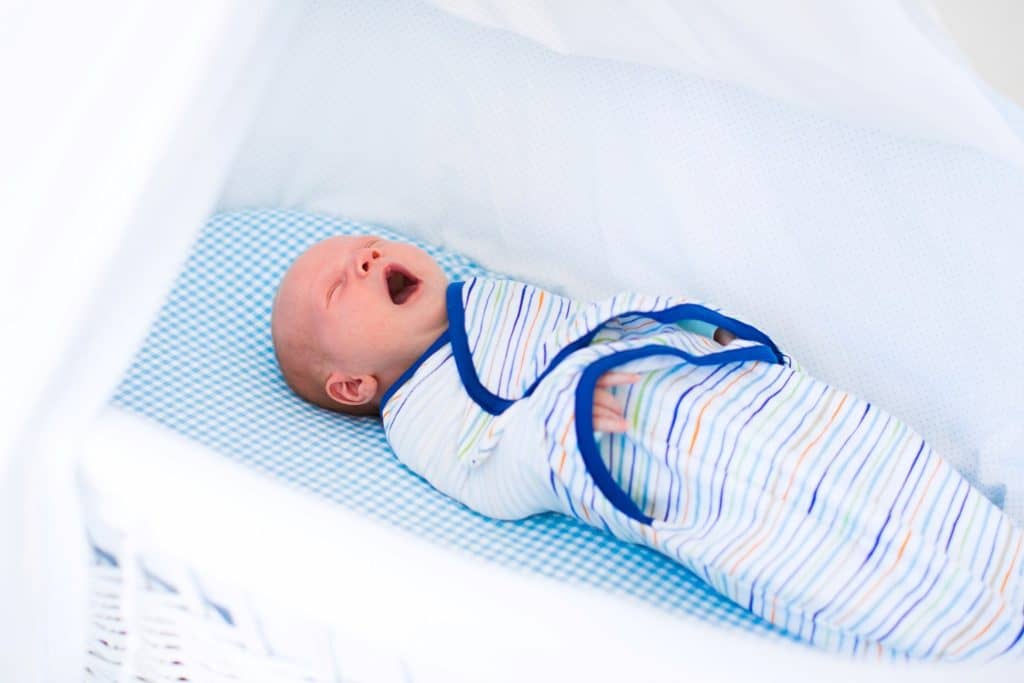Taking care of your newborn can be an intense and overwhelming experience, with one of the more harrowing elements of nighttime baby care being how to handle feedings. Many parents wonder if it’s best to leave their baby swaddled during feeding time.
While swaddling is a good practice to keep your infant content and peaceful, you should probably unswaddle them before feeding at night.
Your baby may want to engage with you during the activity – having their limbs bundled could feel frustrating. It could also get your baby too relaxed, which can lead them to fall asleep in the middle of a nighttime feeding!
Swaddling is a technique used to keep infants comfortable and secure, especially while feeding. However, swaddling will eventually start posing a risk to their safety. We’ll go over everything you need to know about swaddling and nighttime feeding down below.
Swaddling – Benefits and Drawbacks
Swaddling is a parenting technique that involves bundling your little one in a snug cloth or blanket. This creates a comparable environment to their mother’s womb and can go a long way to help soothe your baby’s nerves and promote restful sleep. Swaddling offers a ton of benefits to your baby but comes with risks and drawbacks that must be dealt with to ensure their safety.
Pros of Swaddling
Swaddling provides a sense of comfort and security to your baby, reducing anxiety and their likelihood of being startled. Additionally, it can also promote faster, more peaceful sleep.
Swaddling can create a cozy and calming environment for your baby during feeding time, reducing the likelihood of distractions or restlessness.
Swaddling can also assist in creating a predictable routine for your baby, signaling their brain when it’s time for feeding and rest. Establishing sleep routines is crucial during early infancy.
Cons of Swaddling
Swaddling isn’t a catch-all solution to soothe your baby. It needs to be done properly or not at all, as things could easily go wrong with even a moment of inattentiveness.
Overheating is a major concern for infants when swaddling, as they struggle with regulating their body temperature compared to adults. This risk increases if the swaddling material is too thick or if the weather is hot, so be sure to check up on your baby’s well-being from time to time.
Swaddling too tightly is not recommended as it can hinder the development of your baby’s limbs and bones. Overly tight swaddles may even lead to hip dysplasia, which can significantly hamper your little one’s well-being and future quality of life. Additionally, covering their face and neck with a swaddle or blanket will pose a serious suffocation hazard.
Some babies don’t even like being swaddled at all. Even if your little one does enjoy being swaddled, it won’t stay that way forever: once your baby can flip and roll themselves onto their belly, swaddling starts to become a suffocation hazard.
Swaddles and Nighttime Feedings
When it comes to baby feeding at night, it’s typically recommended to unwrap your baby from the swaddle. Babies past a certain age prefer bringing their hands and mouth to the bottle, rather than having it pushed towards their faces. This action also keeps them engaged while feeding.
Swaddling can make your baby feel so comfortable that they might fall asleep while feeding! Waking them up would be time-consuming and may even disrupt their sleep cycle. Finding a balance between keeping your baby cozy and awake is crucial for successful feeding sessions.
After a nighttime feeding, you may need to swaddle your baby again. However, be mindful when doing so, as it’s easy to accidentally swaddle them too tightly or improperly, putting them at risk of suffocation or overheating.
That said, nighttime baby care needs to be handled on a case-by-case basis, and the decision to unswaddle your baby before feeding time depends on a multitude of factors.
When Should I Stop Swaddling My Baby?
Swaddling is an effective technique to soothe your baby, but there’ll come a point where it stops being a comfortable experience for your little one – they’ll start to feel confined and restless instead. Continued swaddling past this point has been linked to higher occurrences of SIDS!
Swaddling is generally safe for babies up to two months old. However, after this point, they may begin to show signs that they no longer want to be swaddled. They may even show signs of these earlier, as babies develop at different rates – be mindful of these crucial cues.
Signs to Stop Swaddling
Immediately stop swaddling if you notice that your baby is able to roll over from front to back. This means that your little one can lie on their tummy, which can make it difficult to breathe. They may not be able to roll back out of this position, which poses a huge suffocation hazard.
You may want to reduce their swaddling frequency if you notice them trying to break out of the wrap. It’s a sign that they want to be more active and engage with the world using their senses.
There’s no set age for when to move them out of the swaddle, though. Try to figure out how to proceed based on your baby’s behavior. If you aren’t sure on what to do, don’t hesitate to get in touch with your pediatrician to get their medical input.
Final Thoughts
Swaddling can benefit your baby in many ways, but it’s advisable to unswaddle your baby before nighttime feeding to keep them comfortable and awake. Improper or late swaddling can be dangerous, so be mindful of signs that indicate when to stop. Remember, your baby’s safety should always come first, even if it means sacrificing some comfort for them or you.








